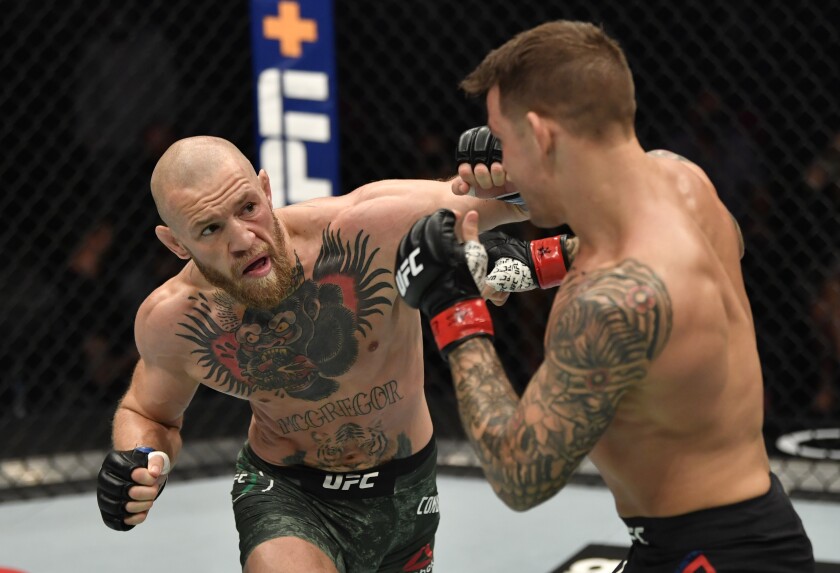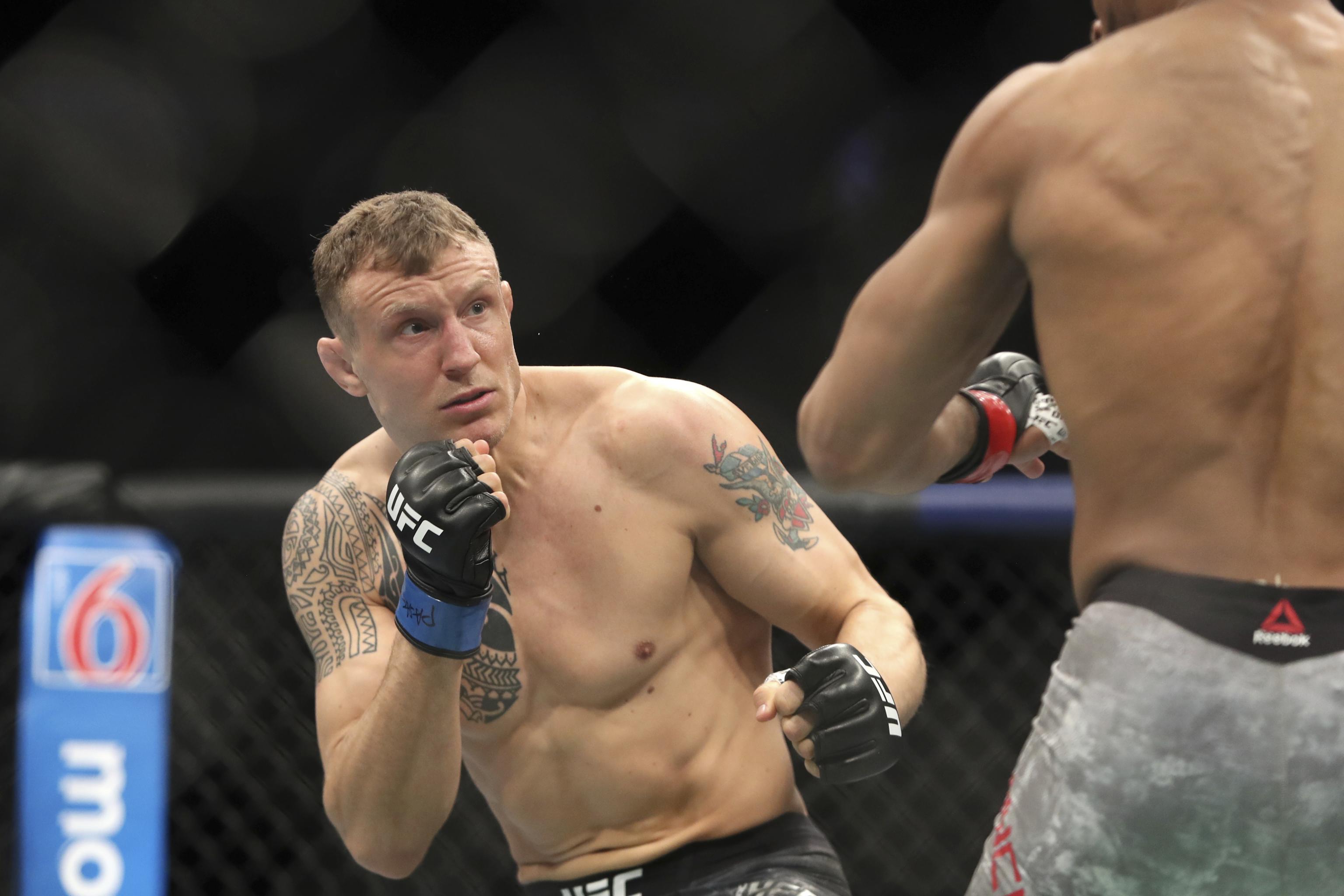- During the Mcgregor fight in last year october. Well we all know the trash talk before that fight. Khabib was enraged with the stuffs said by conor in different press conferences and on other.
- There are either 3 or 5 rounds in a UFC fight. Normal bouts are 3 rounds in length, while championship and main event fights are scheduled for 5 rounds. Each round is five.
How many rounds in UFC fighting Typically in UFC fighting, there are a total of five rounds– with each round lasting no longer than five minutes with a 1-minute rest in-between. That is of course.
Way of Martial Arts (wayofmartialarts.com) is a participant in the Amazon Services LLC Associates Program, an affiliate advertising program designed to provide a means for sites to earn advertising fees by advertising and linking to Amazon.com. This site also participates in other affiliate programs and is compensated for referring traffic and business to them.
UFC holds events almost every weekend with around 10 to 13 fights taking place at each event.
UFC events usually start in the afternoon and last through around midnight.

But what about a single UFC fight? How long do UFC fights last?
UFC fight can last either 3 (non-championship fight) or 5 (championship and main event fight) rounds. Each round lasts for 5 minutes with a 1-minute rest in between rounds. That means that 5-round fights last for 29 minutes, and 3-round fights last for 17 minutes.
The aformentioned times only apply if a fight goes to the distance.
What if the fight is stopped earlier? If there was a knockout or submission? What is the average time a UFC fight will last?
I conducted a little research and bring you everything about the number of rounds, lengths, etc.
How To Get In The Ufc
How Long Are UFC Fights and Rounds?
The current rules of UFC fights were established by the New Jersey Athletic Control Board (NJACB) under the title “Unified Rules of Mixed Martial Arts”. [1]
They were established as a general guideline for MMA but became so popular that many other states (including Nevada, Louisiana, and California) decided to adopt them, along with the UFC.
In the passages that follow, I’ll be going over these rules.
Despite the rules, the UFC doesn’t have a fixed round system, meaning that fights can vary in maximum length, depending on the type of the fight.
Championship or “main event” fights last longer than regular fights.
But the maximum number of rounds is still substantially smaller than in other combat sports, like boxing.
The “big ones” – championship and “main event” fights – can last for a maximum of five rounds, while other fights can last for a maximum of three rounds.
Some non-main-event fights, but only in certain divisions (outside of the UFC), also have a special, “sudden death” fourth round in case of a draw to determine the winner, but that is not a widely spread rule.
The UFC rounds can last up to five minutes and there is a one-minute break between rounds.
Therefore, the UFC fights (if they go to the distance) can last either 17 or 29 (including rests) minutes, depending on whether it’s fought for three or five rounds.
Now that we’ve given you the generalities, let us see how these elements function in more detail.
Difference Between Three and Five Round Fights in the UFC
Now that I’ve determined that a fight can last for three or five rounds, let us see how the number of rounds is actually determined.
Here, we have to consider reasons that are not connected to the fights themselves, but rather to the popularity and media coverage of the fights.
Typically, UFC fights last for three rounds. These fights can be very exhausting and stressing for the fighters, which means that 15 minutes of fighting is generally not too much.
Most non-championship and non-main-event bouts have three rounds, meaning that you’ll see these kinds of fights most often.
So, when do the five-round matches actually kick in?
Five-round fights are usually championship and main event bouts at specific UFC events.
Certainly, these fights cause more stress for the fighters and are generally more demanding, but the fact is that if you want to be the best – you have to make an effort.
Yet, the main reason for these fights having five rounds is – money. Namely, five-round fights are very popular among the fans and people will pay more for such FIGHTS.
This goes for ticket buyers, but also for those who watch the matches via pay-per-view (PPV).
The UFC gets a lot of its income from PPV, which means that they have to offer a lot to the viewers and the viewers want more rounds, although they usually don’t get to see them (see below) play out.
The psychological effect is obvious – more rounds mean a more important fight; a more important match means better fighters; better fighters mean a better fight and the people want to see that.
Of course, there are exceptions to this rule, mostly when main event fights end up having three, instead of the usual five rounds.
This happens mostly in those cases when a non-main-event fight ends up becoming the main event one on short notice, due to the original main event bout being canceled for some reason.
A famous example is the 2019 fight between Israel Adesanya and Anderson Silva during the UFC 234 event. [2]
The initial main event bout that night was the fight between Robert Whittaker and Kelvin Gastelum, but it was canceled because Whittaker was deemed unable to fight because of a hernia just one day prior to the fight.
How Many Rounds Are Mma Fights
Thus, the Adesanya vs. Silva fight became the main event, but since it was initially arranged to last three rounds, so the number was preserved due to a short period.
How Often Do UFC Fights Go to the Distance?
We’ve seen the rules and practice relating to the rounds, but now let me discuss the reality – a fight can last for 17- or 29-minutes max., but how often is that the case?
The UFC viewer is difficult to please. On one hand, he’ll pay money to see a five-round fight because he expects a good and long fight, but on the other hand – he’ll enjoy a quick K.O. in the first round because it’s entertaining.
Now let us see some of the numbers.
To calculate my numbers, I have decided to look at the best-ranked fighters (pound-for-pound) and their five recent fights (at the moment).
I’ve decided to take the ten best fighters and their five fights, meaning we’re getting a pool of 50 fights to analyze.
I am going to show you how long the fights lasted, how they finished, and use those numbers to see the average length of recent UFC fights and see how many actually go to the distance.
Ufc Rounds Time
Let’s take a look at the numbers:
| Fighter | Fight duration | Average duration | Total rounds | |||||
|---|---|---|---|---|---|---|---|---|
| 1 | 2 | 3 | 4 | 5 | ||||
| 1 | Jon Jones | 25:00 | 25:00 | 25:00 | 12:02 | 13:01 | 20:01 | 21 |
| 2 | Khabib Nurmagomedov | 12:06 | 18:03 | 25:00 | 15:00 | 12:31 | 16:32 | 18 |
| 3 | Stipe Miocic | 24:09 | 4:33 | 25:00 | 2:22 | 4:27 | 12:06 | 12 |
| 4 | Israel Adesanya | 25:00 | 8:33 | 25:00 | 15:00 | 4:51 | 15:41 | 16 |
| 5 | Daniel Cormier | 24:09 | 7:14 | 4:33 | 7:00 | 13:01 | 11:11 | 12 |
| 6 | Kamaru Usman | 24:10 | 25:00 | 25:00 | 25:00 | 15:00 | 22:50 | 22 |
| 7 | Alexander Volkanovski | 25:00 | 15:00 | 9:14 | 15:00 | 9:57 | 14:50 | 15 |
| 8 | Conor McGregor | 0:40 | 18:03 | 8:04 | 25:00 | 9:12 | 12:12 | 14 |
| 9 | Max Holloway | 25:00 | 25:00 | 25:00 | 20:00 | 19:51 | 22:59 | 22 |
| 10 | Justin Gaethje | 23:39 | 4:18 | 2:30 | 1:27 | 20:33 | 10:29 | 12 |
So, after analyzing the numbers for these 50 fights, you can see that the average duration of a fight is 15:53 minutes.
This means that a fight usually ends less than two minutes into the 3rd round.
How Many Rounds In Mma
What does that mean for the viewers? It means that viewers rarely see a full five-round fight when it comes to fights involving the best fighters, which is rather interesting because people pay the most to see exactly these fighters in a fight.

The average fight length of the best UFC fighters doesn’t usually last much longer than three rounds, regardless of the actual number of prearranged arounds, which is an interesting fact to note in light of everything else.
As for going to the distance, you’ve seen that 31 fights ended before going to the distance, meaning that we’re dealing with a percentage of 62% elite fights that end before going to the distance.
What does that mean for the viewers? Well, this just confirms that the temporal numbers already told us earlier – elite matched rarely go to the distance.

Just 19 of them (a mere 38%) went to the distance when elite fighters are concerned and that is also a very interesting fact to note.
So, these are the numbers I have for you.
You should, of course, take them with a grain of salt because they are derived from a very small number of fights which can hardly be considered as being fully representative.
But still – they are good enough to illustrate the general concept and inform you on how things work on a superficial level.
Duration of the Fights in the Early Days of UFC
UFC’s new system is not consistent and might be confusing from time to time. But at least there is one now.
Historically, UFC didn’t even have a system at all so you can imagine how difficult it would’ve been to follow such matches.
The first round system was introduced during the UFC 21 event, held in Cedar Rapids, IA, in 1999. [3]
How Many Rounds Are Ufc Fights Today
The round system became s standard rule then and has since become a fundamental aspect of UFC fights and events.
But, from 1993 to 1999, there were no rounds, no breaks, and no time limits, which mean that the fight could – theoretically – last forever.
So, for a whole six years, the UFC never bothered to implement a round system and enabled its fighters to fight as long as they physically could.
The longest fight under such a regime was the 1995 fight between Ken Shamrock and Royce Gracie, held during the UFC 5 event in Charlotte, NC.
The fight lasted for a full 36 minutes without pauses, after which it was interrupted by the referee and declared a draw. It is the record holder for the longest UFC fight even today.
On the other hand, the quickest UFC fight ended after just 5 seconds, when Jorge Masvidal knocked out Ben Askren during the UFC 239 event in Paradise, NV, in 2019.
The Bottom Line
In short, UFC fights are, since 1999, divided into 5-minute rounds. A fight can last for 3 or 5 rounds, depending on its importance and potential income.
Statistically, recent elite fights rarely go to the distance and – on average – last just a bit over three rounds, which is an interesting fact to know.
Almost 2/3 of the recent elite bouts ended before going to the distance.
That’s it for today. I hope I’ve helped you and that I will see you soon!
How Are Ufc Fights Scored
If you have any other questions regarding the UFC, be sure to check out my article with 25 things every fan should know about the UFC.